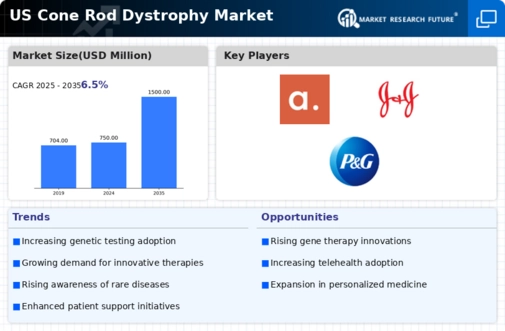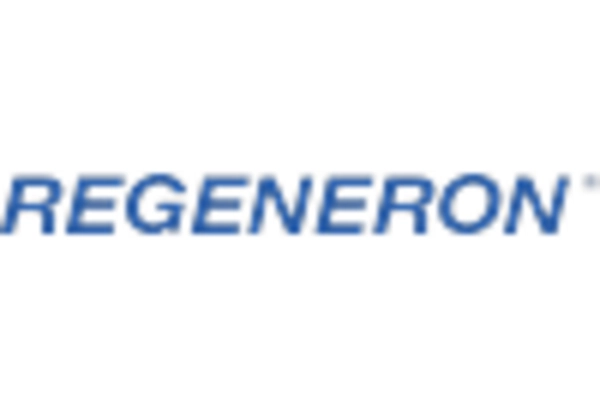Advancements in Genetic Research
The cone rod-dystrophy market is experiencing a surge in advancements in genetic research, which is pivotal for developing targeted therapies. Recent studies indicate that understanding the genetic mutations associated with cone rod dystrophy can lead to more effective treatment options. For instance, the identification of specific gene mutations has opened avenues for gene therapy, which could potentially restore vision in affected individuals. The market is projected to grow as these innovations translate into clinical applications, with estimates suggesting a growth rate of approximately 8% annually. This progress in genetic research not only enhances treatment efficacy but also fosters collaboration among pharmaceutical companies, research institutions, and healthcare providers, thereby driving the cone rod-dystrophy market forward.
Growing Patient Population and Awareness
The cone rod-dystrophy market is witnessing a growing patient population, which is driving demand for effective treatments. As awareness of the condition increases, more individuals are being diagnosed, leading to a larger market base. Estimates suggest that the prevalence of cone rod dystrophy may be around 1 in 40,000 individuals in the US, indicating a significant number of potential patients. This growing patient population is prompting healthcare providers to seek innovative solutions, thereby stimulating the cone rod-dystrophy market. Additionally, increased awareness campaigns are educating the public and healthcare professionals about the condition, further contributing to early diagnosis and treatment, which is essential for improving patient outcomes.
Regulatory Support for Innovative Therapies
The cone rod-dystrophy market is positively influenced by regulatory support aimed at facilitating the approval of innovative therapies. Regulatory bodies, such as the FDA, have implemented expedited pathways for the approval of treatments targeting rare diseases. This support is crucial for companies developing therapies for cone rod dystrophy, as it reduces the time and cost associated with bringing new treatments to market. The introduction of programs like the Orphan Drug Designation provides incentives, including tax credits and market exclusivity, which can enhance the financial viability of developing new therapies. As a result, the regulatory environment is likely to foster growth in the cone rod-dystrophy market, encouraging more companies to invest in research and development.
Technological Innovations in Diagnostic Tools
The cone rod-dystrophy market is being propelled by technological innovations in diagnostic tools, which enhance the ability to identify and monitor the disease. Advanced imaging techniques, such as optical coherence tomography (OCT) and genetic testing, are becoming more accessible and affordable. These innovations allow for earlier diagnosis and more precise monitoring of disease progression, which is crucial for effective treatment planning. The market for diagnostic tools is expected to grow significantly, with projections indicating a compound annual growth rate of around 10% over the next few years. As diagnostic capabilities improve, they are likely to lead to better patient management and outcomes, thereby positively impacting the cone rod-dystrophy market.
Increased Investment in Rare Disease Treatments
The cone rod-dystrophy market is benefiting from increased investment in treatments for rare diseases. As awareness of rare genetic disorders grows, pharmaceutical companies are allocating more resources to research and development. In the US, funding for rare disease research has seen a notable increase, with estimates indicating that investments could reach $5 billion by 2026. This influx of capital is likely to accelerate the development of innovative therapies for cone rod dystrophy, as companies seek to address unmet medical needs. Furthermore, the potential for lucrative returns on investment in this niche market is attracting new players, thereby intensifying competition and innovation within the cone rod-dystrophy market.
















